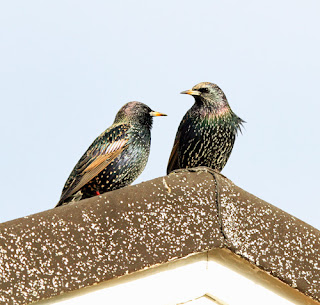Normandy Marsh was our location for our December Sunday monthly walk it always gives us a good selection of birds to find and see. We started our walk from Maiden Lane with a Redwing and Song Thrush and headed out to look over Oxey Lake.
where we found six Little Grebe diving and very actively feeding, Coot, Tufted Duck, Redshank and Little Egret. Whilst we were moving on we had our first sighting of a Kingfisher streaking by. Looking over the Solent we added a pair of Eider and a number of Red-breasted Mergansers, Great Crested Grebe and a couple of female Goldeneye. A pretty good start, looking over Normandy Marsh itself we scanned through the many Wigeon and Teal and found Shoveler, Pintail, good numbers of Lapwing either roosting or feeding around the edges of the lagoon. Here we also found Dunlin more Redshank a single Greenshank, Ringed Plover and Black-tailed Godwits. Then a Kingfisher was found sitting atop a post out in the lagoon which we watched fishing before it flew off out of sight. Jackie then drew our attention to a small group of waders feeding together they were belly deep and had a sweeping feeding action and once we moved along the path a little it became apparent that our first thought were correct we had seven Spotted Redshank and very close giving excellent views.
where we found six Little Grebe diving and very actively feeding, Coot, Tufted Duck, Redshank and Little Egret. Whilst we were moving on we had our first sighting of a Kingfisher streaking by. Looking over the Solent we added a pair of Eider and a number of Red-breasted Mergansers, Great Crested Grebe and a couple of female Goldeneye. A pretty good start, looking over Normandy Marsh itself we scanned through the many Wigeon and Teal and found Shoveler, Pintail, good numbers of Lapwing either roosting or feeding around the edges of the lagoon. Here we also found Dunlin more Redshank a single Greenshank, Ringed Plover and Black-tailed Godwits. Then a Kingfisher was found sitting atop a post out in the lagoon which we watched fishing before it flew off out of sight. Jackie then drew our attention to a small group of waders feeding together they were belly deep and had a sweeping feeding action and once we moved along the path a little it became apparent that our first thought were correct we had seven Spotted Redshank and very close giving excellent views.
Further on we were scanning the outer marsh but the fog hampered our view some what but we found good numbers of waders and as the tide was moving they became restless and we watch a large flight of Dunlin swirling around trying to find a resting place. Angus and Tony both picked out groups of Grey Plover and we had the od Turnstone or two flyby. There was also the usual Dark-bellied Brent now back in good numbers they were scattered in various size groups over the marsh and some were flying in to the fresh water of the lagoon to bath.
As we started the return walk we had a small flock of Linnet and found the odd Meadow Pipit I found another two Greenshank. As we took the path towards the yacht yard Angus asked what the possibility was of seeing a Dartford Warbler and Jackie said well on a sunny day we might have been lucky but because of the damp foggy cold weather she doubted if we would see one and no sooner than she stopped speaking Scott sighted one on the gorse by the path so carefully approaching a little closer we stopped and waited and watch and a female popped out on top of the gorse giving brief but good view as she moved through the bushes in search of insects.
Walking the lane back to the cars is where we usually pick up our woodland species and indeed we did with the usual tit species Goldcrests, and various finch species were all seen. In one of the fields there was a good number of Curlew amongst which I found a single Whimbrel. Also along here we had our only raptor in the guise of a Buzzard a Great Spotted Woodpecker. We completed our walk with a list of Sixty Four species not bad for a single site in two and a half hours.

















































